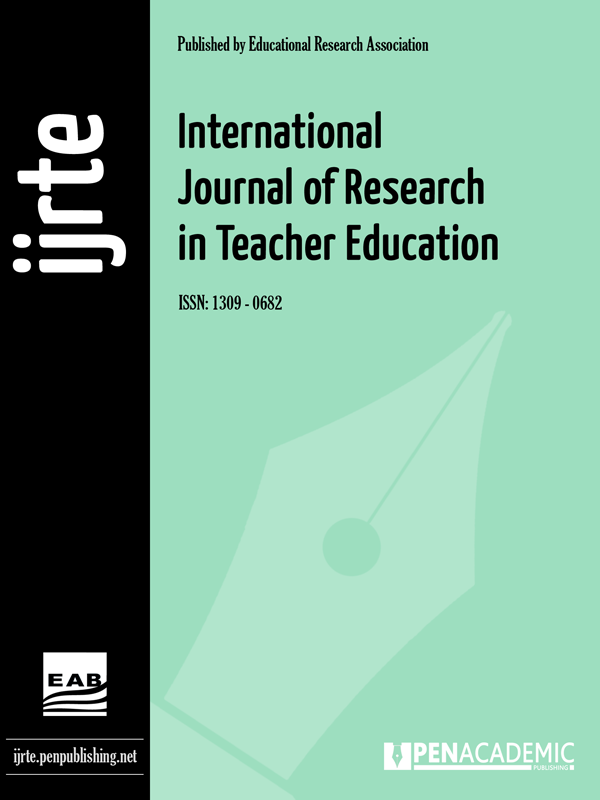Original article | International Journal of Research in Teacher Education 2018, Vol. 9(4) 25-35
The Changing Perspective of Teaching as a Profession
Eliseo Marpa & Cynthia Trinidad
pp. 25 - 35 | Manu. Number: MANU-1811-04-0001
Published online: December 23, 2018 | Number of Views: 1363 | Number of Download: 1252
Abstract
The study aims to determine the changing perspective of teaching as a profession in the Philippine Context. To determine the changing perspective of teaching as a profession, the study employed a qualitative method utilizing 52 participants. The data were gathered using the open-ended questionnaire and focus group discussion protocols. Thematic analysis was used by the researchers to determine themes for the responses of the participants. Findings show that the majority of the teachers and retired teachers dreamed of becoming a teacher. They regarded teaching as a low-status profession before. However, today, they said that teaching can equally compare to other professions. Salaries and benefits are better than before. The community regarded it as the noble and dignified profession in the world. Furthermore, findings indicate that teaching is a female dominated profession. Along with this line, the study concludes that there is a notable change in the perceptions of teaching before and today. Teaching is more attractive today than before.
Keywords: Changing, Perspective, Teaching, Profession
| How to Cite this Article? |
|---|
|
APA 6th edition Harvard Chicago 16th edition |
| References |
|---|
|
Ackaert, L. and Verhaeghe, J. P. (2000). The influence of financial factors on participation in higher education. Paper presented at the European Conference on Educational Research, Edinburgh, 20-23 September 2000. Alrubai, R. (2015). The Heart of Teaching: What It Means to Be a Great Teacher. Teacher Development. https://www.edutopia.org. Arends, R. I, Winitzky, N. E., Tannenbaum, M. D., (2001). Exploring Teaching: An Introduction to Education. 2nd Edition, McGraw-Hill Higher Education, A Division of the McGraw-Hill Companies. Boyatzis, R. E. (1998). Transforming qualitative information: Thematic analysis and code development. Thousand Oaks, CA: Sage. Braun, V. and Clarke, V. (2006). Using thematic analysis in psychology. Qualitative research in Psychology, 3 (2). pp. 77-101. ISSN 1478-0887 Available from: http://eprints.uwe.ae.uk/11735 Center on International Education Benchmarking. Cox, J. Professional Commitment in the Teaching Profession. Teach HUB.com. Dave. A. (2013). Is Teaching a Noble Profession? http://daveavani.blogspot.com. Dinham S. (2013). Improving Teacher Quality in Australia. Canada Education, 53. Donaldson, G. (2010) Teaching Scotland’s Future. Edinburgh: The Scottish Government. Donaldson, G. (2010). teaching Scotland’s Future. Edinburgh. The Scotish Government. Gove, M. (2013). An Interview with the Secretary of the Stae of Education. London. 22 May 2013 Hall, D. and Langton, B. (2006). Perception of the Status of Teachers. New Zealand: Ministry of Education. Hargreaves, L., Cunninghman, M., Hansen, A., McLintyre, D. and Oliver, C. (2007). The Status of Teachers and the Teaching Profession in England. London: Department for Education Skills. Hoyle, E. (2001). Teaching: Prestige, Status and Esteem. Educational Management and Administration, 29(2), 139-152. http://newsinfo.inquire. net/breaking news /20080127-115144/html). Kottler, J.A. and Stanley, J.Z. (2000). On Being a Teacher. The Human Dimens Kazi Afaq Ahmed, K.A, Sharif, N. and Ahmad, N. (2017). Factors Influencing Students’ Career Choices: Empirical Evidence from Business Students. IBIMA Publishing Journal of Southeast Asian Research http://ibimapublishing.com/articles/JSAR/2017/718849. Kottler, J.A and Stanley, J.Z. (2000). On Being a teacher. The Human Dimens. Maῆalac, H. K. (2016). Teaching as a Lifelong Commitment. https://blogs.chapman.edu. Nisbet T. (2013). An Interview with Senior Education Advisor. Cambridge International Examinations, Singapore. Niu, Z. (2009) "Reforms on teachers' employment system and children's rights to education in China", International Journal of Educational Management, Vol. 23 Iss: 1, pp. 7-18 Obemeata, P.O. (1999). Gateway to Teaching. Dubuque: WMC Brown. Salandanan (2005). Teaching and the Teacher. Lorimar Publishing Company Inc., Manila, Philippines. Santiago G. (2013). Attracting, developing and Sustaining Effective Teacher. Watt, H.M.G., Richardson, W.P., Klusmann, U., Kunter, M., Beyer, B., Trautwein, U., et al. (2012). Motivations for choosing teaching as a career choice: An international comparison using the FIT-Choice scale. Teaching and Teacher Education, 28, 791-805. |


